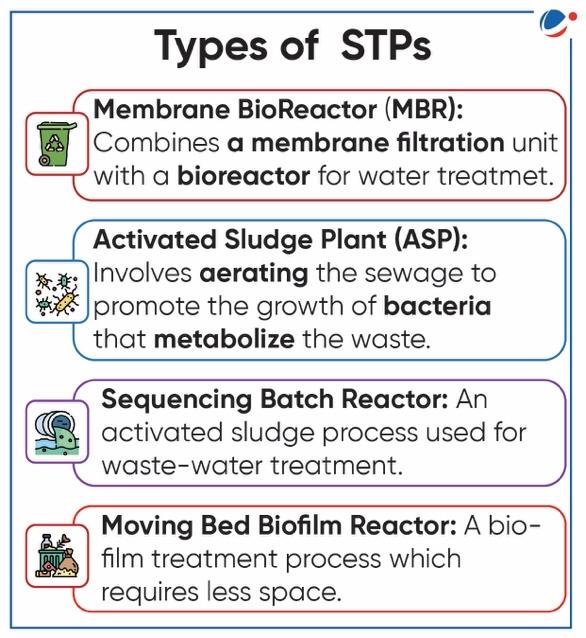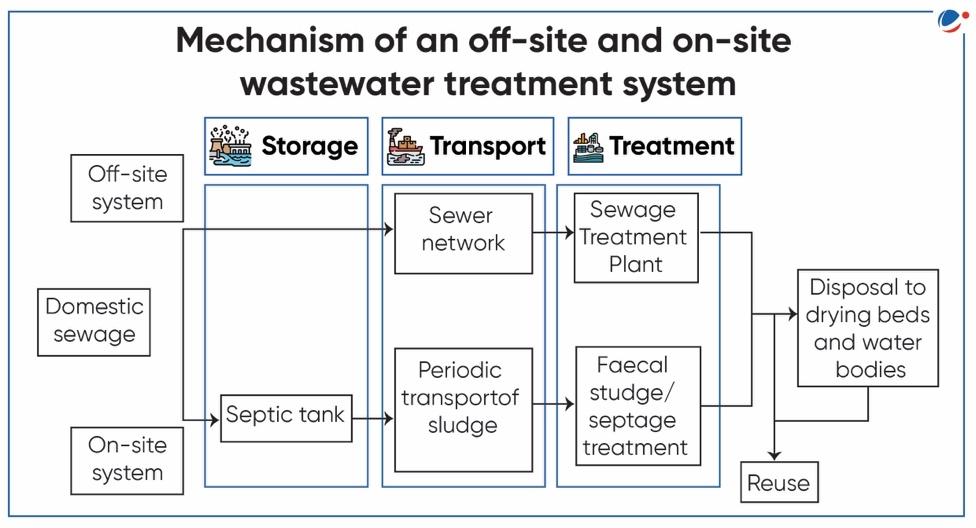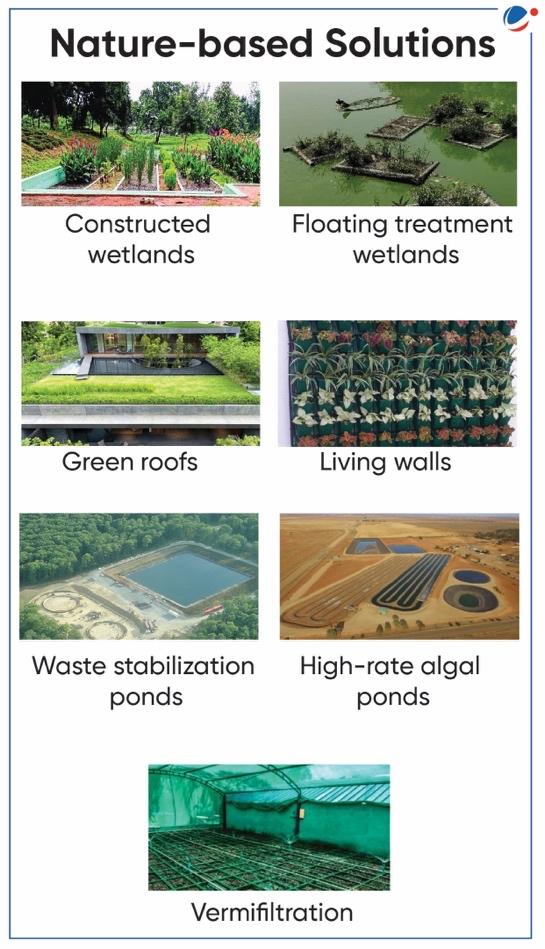Why in the news?
The National Mission for Clean Ganga (NMCG) under the Ministry of Jal Shakti, issued a notification to amend the River Ganga (Rejuvenation, Protection and Management) Authorities Order, 2016.
More about the news
- The amendment allows NMCG to discharge the treated effluent with prescribed standards into the river Ganga after exploring the options for its direct reuse.
- Earlier the provision was against the discharge of untreated or treated sewage into the river by anyone.
- The move is aimed at ensuring more water flow into the river thereby improving its biodiversity.
To know more about the National Mission for Clean Ganga (NMCG), kindly refer to Article 5.1. Namami Gange Programme (NGP) in September 2023 edition of VisionIAS Current Affairs Magazine.
Sewage generation in India and STPs
- The estimated sewage generation from Class I cities and Class II towns in India is more than 33,000 Million Litres per Day (MLD) and the current treatment capacity of STPs is just 18.6%.
- STPs are facilities that treat wastewater from domestic, commercial, and industrial sources to remove pollutants and contaminants before releasing them into the environment.

Institutional arrangement and initiatives for Sewage Treatment in India
- As Water is a ‘State Subject’ under the Seventh Schedule (Article 246), it is the responsibility of the States/UTs to ensure the cleanliness and development of rivers.
- National Urban Sanitation Policy (2008) made local governments responsible for behavioural change, total sanitation, and 100% safe waste disposal.
- The 74th Constitutional Amendment (1993) decentralized the water supply and sanitation services from the state government to the Urban Local Bodies (ULB).
- As per the provisions of the Environment (Protection) Act, 1986 and the Water (Prevention & Control of Pollution), Act 1974,
- Industrial units and local bodies are required to install STPs and Effluent treatment plants (ETPs to treat their sewage before discharging into the river.
- However, there is no specific act dedicated to the management of wastewater in India.
- Other initiatives include components of the Atal Mission for Rejuvenation & Urban Transformation (AMRUT), Smart Cities Mission, Namami Gange program and National River Conservation Plan.

Challenges associated with STPs
- Lack of Capacity in ULBs: To plan and implement sewage treatment projects within their administrative jurisdictions.
- CAG audit (2016) in Jharkhand found that none of the sampled ULBs had a sewage network, which led to 175 MLD of untreated wastewater being discharged into open drains.
- Lopsided implementation by the states: 5 states (Maharashtra, Gujarat, Uttar Pradesh, NCT of Delhi and Karnataka) account for 60% of the total installed treatment capacity.
- Lack of specific framework: There is no specific policy at either the Central or State level that incorporates treatment of polluted water or its ecological restoration.
- Differences in discharge standards: For instance, Surface water body is regulated by 35 parameters while wastewater for land application is regulated by only 10 parameters.
- Low Compliance rate: It is found that only 23 % of treatment capacity is meeting the consented parameters of State Pollution Control Boards (SPCBs).
- Low economic viability: STPs are highly capital-intensive and usually take around three to eight years to break even thereby hindering private investments.
Way forward
- Establishing multiple monitoring points: Including sources, environmental systems, exposure pathways, and the recipients for better control of pollution loads.
- Utilization in Irrigation: The Indian Agricultural Research Institute, Karnal, has researched sewage farming and recommended an irrigation method for sewage-fed tree plantations, which can be widely adopted.
- Focus on alternative usage: Local bodies can focus on the utilization of treated sewage for non-potable purposes like horticulture, irrigation, fire fighting, industrial cooling etc.
- Government of Karnataka has issued a directive to utilise tertiary treated sewage for non-potable purposes, like all gardening, including parks, resorts, and golf courses.
- Defining better and uniform water quality standards: This along with monitoring will detect pollution levels, trace them back to the source and estimate the impacts.
- Setting up of underground STPs in land-scarce cities: This will help to eliminate negative environmental impacts like noise, odour, and aesthetics in a crowded city
- For example, underground STPs are set up in most heavily populated Chinese cities.
- Implementing Nature-based Solutions (NbS): like artificial wetlands, planted soil filters, vegetated submerged beds etc.






